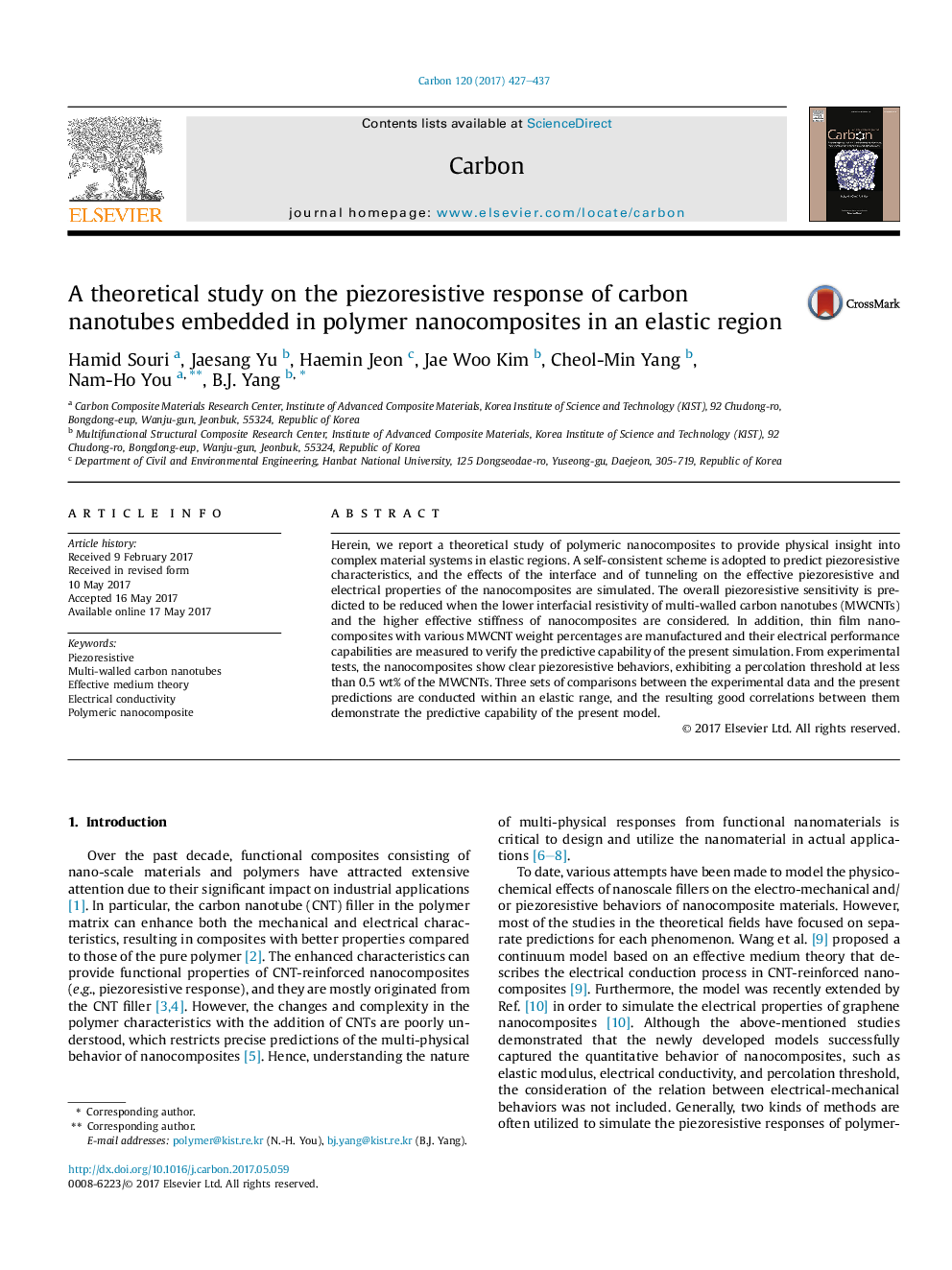| Article ID | Journal | Published Year | Pages | File Type |
|---|---|---|---|---|
| 5431665 | Carbon | 2017 | 11 Pages |
Herein, we report a theoretical study of polymeric nanocomposites to provide physical insight into complex material systems in elastic regions. A self-consistent scheme is adopted to predict piezoresistive characteristics, and the effects of the interface and of tunneling on the effective piezoresistive and electrical properties of the nanocomposites are simulated. The overall piezoresistive sensitivity is predicted to be reduced when the lower interfacial resistivity of multi-walled carbon nanotubes (MWCNTs) and the higher effective stiffness of nanocomposites are considered. In addition, thin film nanocomposites with various MWCNT weight percentages are manufactured and their electrical performance capabilities are measured to verify the predictive capability of the present simulation. From experimental tests, the nanocomposites show clear piezoresistive behaviors, exhibiting a percolation threshold at less than 0.5Â wt% of the MWCNTs. Three sets of comparisons between the experimental data and the present predictions are conducted within an elastic range, and the resulting good correlations between them demonstrate the predictive capability of the present model.
Graphical abstractDownload high-res image (245KB)Download full-size image
